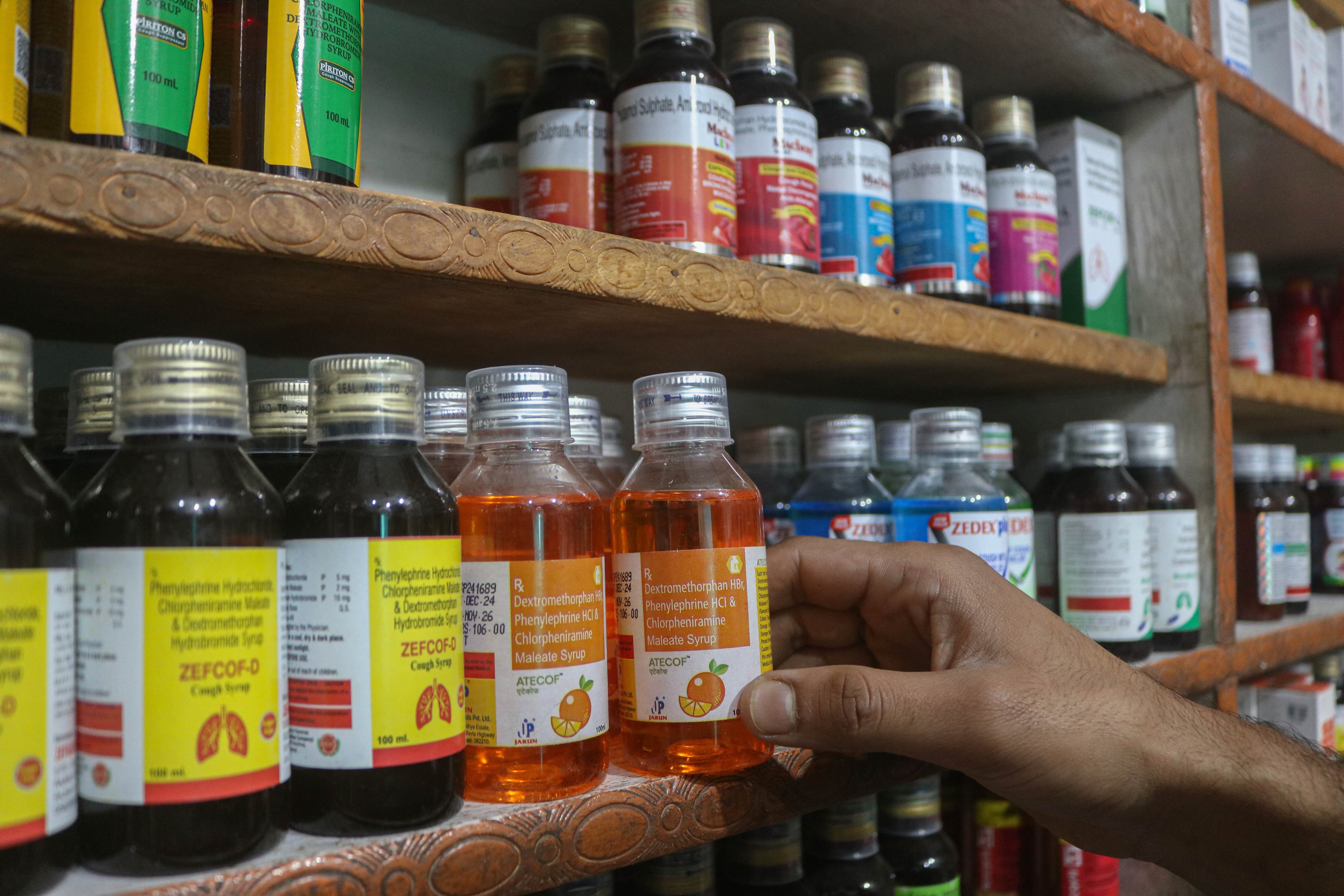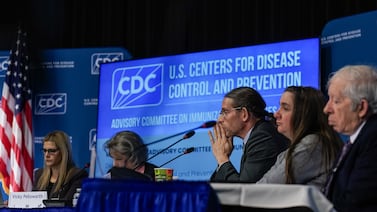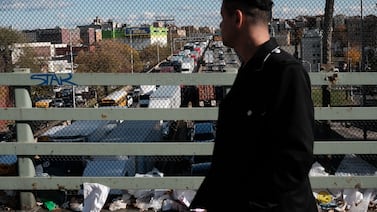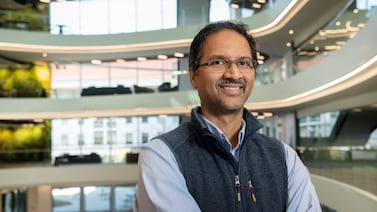Public health, explained: Sign up to receive Healthbeat’s Global Checkup in your inbox a day early.
Hello from Nairobi.
We’re coming off a weekend bookended by public holidays with two very different tones. On Friday, Kenyans marked a day of mourning for the sudden death of Raila Odinga, the opposition candidate in the last election. (Small branches were tucked away in car grills across the city, a mourning ritual I’ve never seen before.) And Monday brought Mashujaa Day, a celebration honoring those who fought heroically for Kenya’s independence.
My name is William Herkewitz, and I’m a journalist based in Nairobi, Kenya. This is the Global Health Checkup, where I highlight five of the week’s most important stories on outbreaks, medicine, science, and survival from around the world.
With that, as we say in Swahili: karibu katika habari — welcome to the news.
India’s drug safety reckoning
A new tragedy is testing global trust in India, the “pharmacy of the world,” where a fifth of all generic drugs and well over half of all vaccines are manufactured.
It’s a complicated story that’s still unfolding, so let me catch you up quickly: At least two dozen children in India have died since early October after taking a locally made cough syrup laced with a toxic industrial solvent. The deaths triggered a World Health Organization alert and renewed scrutiny of India’s pharmaceutical industry, where weak oversight and cheap, poisonous substitutes caused similar cough syrup poisonings in recent years. (Including killing at least 68 children in Uzbekistan and 70 in The Gambia from 2022 to 2023.)
In response, the federal government of India has demanded that all drug manufacturers upgrade their plants to meet WHO standards by the end of the year, rejecting pleas from smaller factories for more time, India’s Business Standard reports.
What’s the context here, and how worried should the rest of the world be?
I reached out to Prashant Yadav, a senior fellow on the Council on Foreign Relations and arguably the world’s foremost expert on health care manufacturing and supply chains, to break it down.
What’s really on trial here isn’t just one company or one product, but India’s entire drug oversight system. “As India’s pharma industry grew substantially in the last three decades, becoming the leading exporter of generic medicines worldwide, the regulatory system struggled to keep pace,” Yadav said. The problem is structural, because India’s drug oversight is divided between the central and state governments. The weaker state regulators license and inspect factories, while the central authority decides which new drugs are safe to approve.
“In a federal democracy, this division of power can create diffuse accountability and regulatory capture by state politics,” he said. (After all, what state official wants to be known for shutting down local factories and eliminating jobs?)
Yadav applauds the government’s new reforms as “a significant step. However, its success will depend on the government’s enforcement capacity, an area that has historically been quite weak.” Some of Yadav’s big remaining questions are: Will regulators receive the resources to actually enforce new standards? Will smaller firms receive government financing to upgrade their equipment and stay in business? Time will tell.
Importantly, the trade group representing the country’s largest drug manufacturers — the Indian Pharmaceutical Alliance — isn’t pushing back on the reforms. “This is an important moment of reflection and renewal for India’s pharmaceutical industry,” Anita Gokral, the group’s senior communications adviser, told me. She called the changes “a regulatory correction and modernization, not a crisis.”
Skepticism about this industry’s motivations is fair, but it’s worth acknowledging that mass, affordable generic drugs from India remain one of the greatest contributions to global public health in the last half-century.
How does this ripple beyond India? While these changes could shake up India’s domestic industry, Yadav said that the impact on global supply chains will likely be limited. The largest exporters already meet international standards. Some smaller manufacturers (where most of the problems lie) may struggle or shut down. But in the long run that could be a good thing. Importers will shift to safer producers, he said, and the result could be a stronger, more trustworthy pharmacy of the world.
The latest report on severe hunger
A new report from the World Food Programme warns that roughly 13.7 million people are at risk of severe hunger across Afghanistan, the Democratic Republic of the Congo, Haiti, Somalia, South Sudan, and Sudan, Reuters reports.
The reason, in short, is that food aid funding is drying up. The UN agency says it’s working with 40% less funding this year (just $6.4 billion, compared to $10 billion last year), forcing ration cuts even in the hungriest corners of the planet. (A U.S. State Department source confirmed to me that in some of these countries, people in the highest category of famine-like conditions are receiving less than a full ration of emergency food.)
It’s a brutal reversal, and I don’t think most taxpayers in the Western countries that are slashing aid realize the scale and scope of the death that we’re courting. (I wrote about this in an Op-Ed for the New York Times a few months ago.)
If you’re asking why this is a global health story, let me relay what countless humanitarian colleagues have told me over the years: Hunger itself actually rarely kills in famine situations, but it opens the door for everything else that does. Malnutrition weakens immune systems, leaving children and adults alike far more vulnerable to diseases like cholera and malaria, or just simple bacterial or viral infections that become deadly.
In humanitarian terms, food is medicine.
Paging Dr. Pangolin
In a fascinating op-ed in STAT News, two global health and conservation researchers argue that climate change isn’t the only planetary crisis threatening human survival. Biodiversity loss is just as bad, and we’re barely talking about it.
The authors, Dr. Neil Vora and Dr. Chris Walzer, make a simple point: You can’t have healthy people on a dying planet. And it’s the very biomes and species that keep our air clean, our crops pollinated, and our pandemics in check that are perishing at record speed.
They bring receipts. “Earth’s biodiversity is vanishing at an astonishing pace. Over the past 50 years, the average size of wildlife populations declined by nearly 75%,” they write. Maybe I’m naive, but I was particularly shocked by their wild stat that 96% of all mammal biomass on Earth is now only us and our livestock (!). Wild mammals make up just the remaining 4%.
The op-ed, which is short and worth the full read, lists a few chain reactions. When bats die, farmers spray more pesticides, which raise infant mortality. When vultures disappear, rabies spreads through unburied carcasses. “For health professionals, this means that safeguarding biodiversity is not simply an environmental concern but a foundational element of preventive and clinical care,” they write.
Their takeaway? The health sector has (finally) woken up to climate change, but not yet to nature loss. Now is the time. “The implications for human health are profound.”
Mind the (funding) gap
There’s some political drama out of London I’d like to dive into … but it only makes sense if you first understand how the world’s biggest charity jar for fighting disease actually works. So, forgive me, but we’re taking a quick detour into the glamorous/riveting/high-octane world of … global health fundraising. (Just try to stay awake.)
Enter “the Global Fund.” It’s a massive, 23-year-old organization that collects donations from wealthy governments and funnels them into programs that fight AIDS, tuberculosis, and malaria in more than a hundred countries. (It credibly claims to have saved 70 million lives globally, to date.)
Every three years, the Global Fund enters what’s called a “replenishment phase,” when donor countries publicly attend a “replenishment conference” and pledge how much money they’ll chip in for the next funding cycle. Think of it as part telethon, part diplomatic speed-date, where the pledges are public and political. The next conference is in November, and the Global Fund is seeking to raise $18 billion.
Here’s the catch: These pledges are just promises. The ponying up comes later, and whether countries actually pay or quietly walk back their pledge is not guaranteed. (Looking at you, USA.) In theory, this setup is meant to guarantee a steady stream of funding so countries can plan ahead. In practice, at any given moment, it’s hard to tell who’s actually paying what to fight the world’s deadliest diseases.
Ok, still awake?
Here’s the news: The Guardian reports that UK Prime Minister Keir Starmer is under pressure not to cut Britain’s planned £1 billion (about $1.34 billion) contribution to the Global Fund, as rumors swirl that a 20% reduction is on the table. This is even as the UK co-chairs next month’s replenishment conference in South Africa. Germany just pledged €1 billion (about $1.17 billion) at the World Health Summit in Berlin, raising the stakes for Britain to keep pace.
What the UK decides here will offer one of the clearest snapshots of whether wealthy countries are still committed to funding the fight against the world’s deadliest diseases, or if that commitment is starting to fade. I’ll be following up.
Tuberculosis on course for a comeback
Our last story of the week comes straight from a new Harvard University press release, because no major outlet picked it up. That’s an absolute shame because it’s an important study about tuberculosis, the centuries-old disease that most of the Western world has seemingly tired of … but nevertheless remains the world’s deadliest infectious disease. Worse, tuberculosis is making a stark, unwelcome comeback as global funding evaporates.
- Disease breakdown: Tuberculosis, or TB (it was also known as “consumption” until the late 1800s,) is a bacterial infection that damages the lungs and spreads through the air when someone coughs or sneezes. It’s slow-moving, stubborn, and extremely hard to treat. It’s able to lie dormant in lymph nodes in the body for years before turning deadly. Despite being curable with months of regular antibiotics, TB still kills over 1.3 million people every year.
A new study published in the scientific journal The Lancet Child & Adolescent Health warns that recent U.S. funding cuts to fighting tuberculosis could cause nearly 9 million new child tuberculosis cases and 1.5 million children’s deaths over the next decade.
The study is built around a mathematical model, which is basically an attempt to use the data we have now to project what the next decade could look like. While forecasting the future with precision is impossible (surprise!) it’s where the findings point that truly matters. To this end, the researcher’s model is largely in line with what two other research teams found earlier in the year.
What’s staggering is that even in the rosiest scenario, many countries across Africa and Southeast Asia will face such a sharp reversal in tuberculosis cases that it could take decades and billions of dollars just to return to where they were last year. “We could soon see more children dying of TB than we have for many decades,” warns Nicolas Menzies, a professor of global health at Harvard.
Two silver linings, if you can call them that: the first, from the press release, is that “the researchers estimated that 90% of the additional projected TB deaths could be avoided if funding was restored after just one year.” The second? Nations funding their own health systems like China, Brazil, and India (instead of relying on outside donors) are projected to stay the course.
I’ll see you all next week.
William Herkewitz is a reporter covering global public health for Healthbeat. He is based in Nairobi. Contact William at wherkewitz@healthbeat.org.






